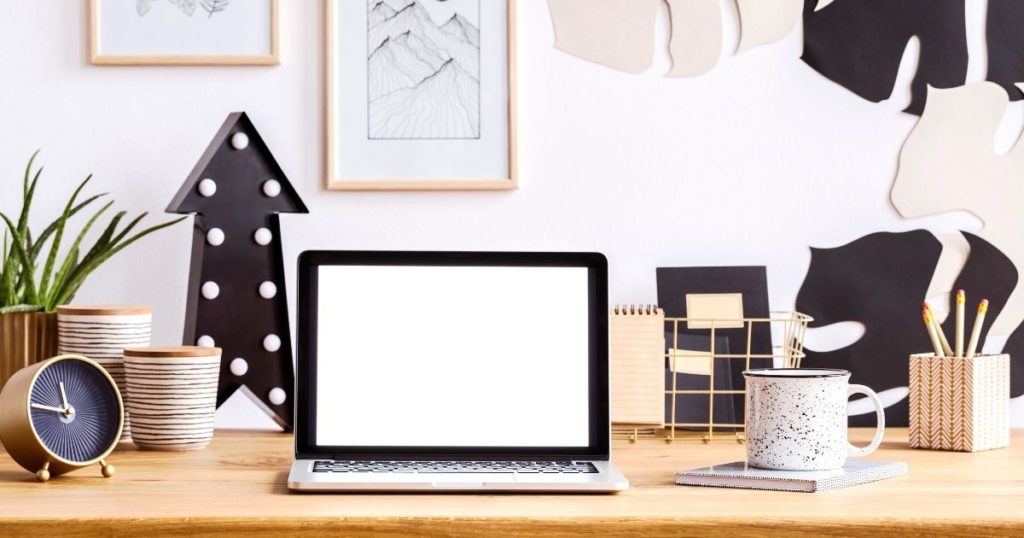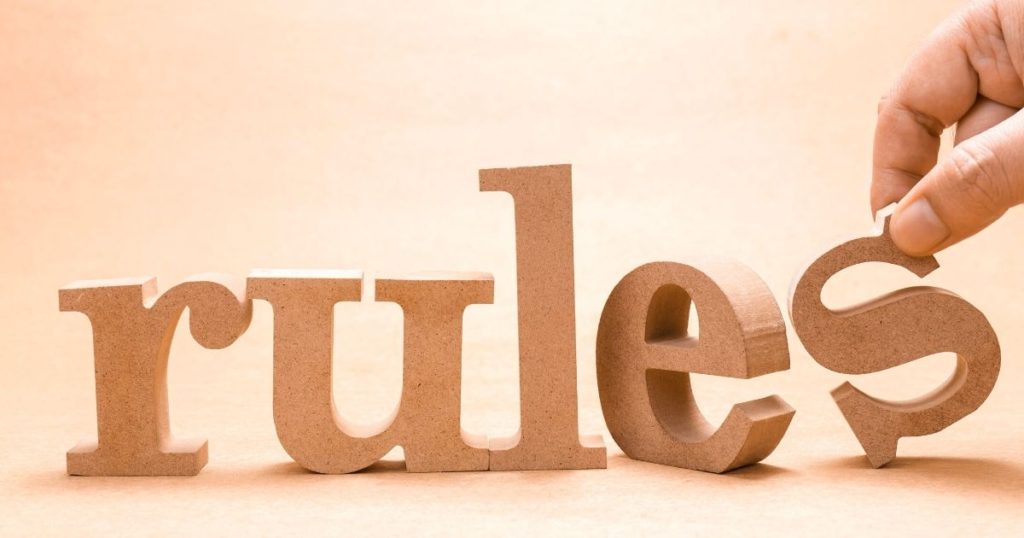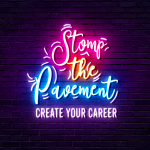When you’re applying for a job, there’s no way to know exactly how many people applied (it’s prob more than you think). That’s why you must do everything you can to make your resume stand out. These professional resume layout tips will help you format your resume so you def shine!
This guide to creating the best resume layout covers:
- Busting a common resume myth
- 4 must know resume layout rules
- Example resume layout
Alright, let’s get into creating a simple resume layout, so you can start transforming your resume!

What is the best resume layout?
Before we dive into the resume layout tips, I want to address a common resume myth:
You do not need to- and should NOT- use a template for your resume.
Why?
Because, your resume is all about making YOU stand out. How can you stand out if you’re using a template a bunch of other people are also using?
I know it’s tempting to use one- especially because we don’t get any real training on writing resumes in high school or college. But that doesn’t mean you can’t create your own resume layout, because you totally can!
I’ll teach you exactly how to create a resume layout that lands you the job interviews you’re dreaming about!
Still not convinced? Hop over to read more about why you should avoid resume templates
Now that we’ve cleared that up, it’s time to get into the 4 resume layout rules!
4 Must Know Resume Layout Rules

When you’re making your resume layout, there are 4 simple rules to follow. By sticking to these guidelines, you’ll create a unique, professional resume that makes YOU stand out (in all the best ways)!
Related first
Studies have shown employers spend the most time reading the top of your resume and the top of each section.
That’s why I recommend dividing your resume into 2 main sections:
- Related Experience
- Additional Experience
Then, take your experiences (work, volunteer, leadership, etc) with the most relevant skills to the job and list those at the top of the Related Experience section.
This way, you know the people reading your resume will see the experiences that best show off how qualified you are!
Wish you had someone on the inside telling them how amazing you are? Learn how to make it happen with my free guide on networking with confidence!
80% OF JOBS ARE ON THE HIDDEN MARKET—
LEARN HOW TO FIND THEM IN THIS FREE WORKSHOP
Are online job apps making your career sour? The key to candy coating your career is networking!
In this FREE workshop, I’ll teach you how to ditch your resume & grow the best resource you have as a job seeker: your network!
Consistency, consistency, consistency
Like I said before, you don’t know how many other people are applying to the jobs you want. Actually, there’s probably more than you think.
Sometimes a big chunk of them are totally qualified, but employers only have a limited number of interview slots.
So, they might start looking at the smallest details of the best resumes- like if all the dates are lined up, fonts are consistent, and spacing is the same.
It sounds tedious and annoying (honestly, it kind of is), but it’s necessary and just how it is.
What’s important is you use this information to your advantage, by perfecting those details and making your resume totally consistent. Watch for things like margin size, bullet spacing, header fonts, and text size.
By making your resume layout completely consistent, it’ll be clean and professional!
Balance

There’s a reason you write bulleted lists on resumes instead of paragraphs: you want to make the reader’s experience as easy as possible. This also means taking a step back to look at the overall picture of your resume.
Make sure your resume has a good balance between text and white space– you don’t want the margins to be too big or the text to overwhelm the page.
Also, use bold and italicized text to balance out the amount of plain text on the page. This easily guides the reader’s eye through your resume.
Once you finish creating your resume layout, print it out and stick it to the wall. Then, step back and look at it from far away to check its balance. Hop back on your computer and fix any of the balance issues you spotted.
Know your field’s standards
I want to make a quick note here: yes, different fields have different standards, but- with a few select exceptions- the core of a professional resume is the same.
So a business resume and graphic design resume might, visually, look very different, but these resume layout tips still apply to both.
80% OF JOBS ARE ON THE HIDDEN MARKET—
LEARN HOW TO FIND THEM IN THIS FREE WORKSHOP
Are online job apps making your career sour? The key to candy coating your career is networking!
In this FREE workshop, I’ll teach you how to ditch your resume & grow the best resource you have as a job seeker: your network!
So, then, what exactly are these standards? Let’s use the examples I mentioned: business and graphic design:
- A business resume absolutely has to follow the strictest resume rules– like Times New Roman font, size 12, black text on a white background, etc. In most corners of the industry, anything else is unacceptable in a business resume layout.
- A graphic design resume, like other creative industries, has some more room to play with the design of their resume. So, there can be color, a personal logo, or other visuals on a creative resume.
- HOWEVER, there is a limit. Resumes still need to focus on the reader’s experience, so anything that makes it hard to read or distracts from YOU is off limits.
If you think your field falls somewhere in the middle, try downloading a new font to use for your name or headers. It’s an easy way to make your resume stand out, without going overboard.
Once you learn your field’s standards, it’s easier to create your own professional resume layout and figure out how to stand out.
Example Resume Layout
The best resume layout is, like I said, one you make yourself (aka no templates). I still wanted to give you an example resume layout to base yours around. Think of this as an outline or road map to your resume- not a template!
While there are plenty of resume layout examples out there, this is what I see as the absolute best resume layout!
- [HEADER]
- Name
- Contact info
- [EDUCATION]
- Degree title
- School name and location
- GPA (if above a 3.0)
- [RELATED EXPERIENCE]
- 2-6 related experiences with bulleted lists describing the relevant skills in each
- [ADDITIONAL EXPERIENCE]
- 2-4 additional experiences with bulleted lists describing the transferable skills in each
- [SKILLS]
- List relevant language and technical skills
Once you’ve mastered this professional layout, you can customize it to fit your industry and positions!
There are a few simple resume layout tips crucial to creating a professional resume. Remember to start with your most related experiences, be consistent throughout your resume, balance the text and white space, and learn your industry’s design standards. These basic parts of the best resume layout will help you create a professional, modern resume!
Ready to stop relying on your resume? Grab my free guide to network with confidence and transform your career!







